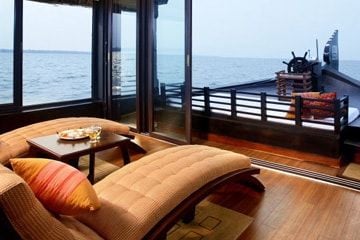
When orders went out in 1946 to barricade Indian officers on board their ships, violence broke out. History sleeps at the Naval Uprising Memorial in Colaba, South Mumbai.
MANALI ROHINESH
Wandering down leafy, shady lanes of a city is an experience that must be repeated ever so often. Especially, the quiet streets of the city one is born or raised in. There is so much on offer and not everything is known even to long-time residents.
Colaba in South Mumbai is one such haven, which continues to delight me after having lived in Mumbai all my life. Walking down its paved roads bordered by well-maintained buildings which speak of a time long gone is a solitary pleasure that I frequently succumb to. The gothic architecture just adds to the atmosphere. These brownstone buildings with their white trims and high spiraled archways always remind me of chocolate cake with layers of white cream and icing!
Food is not the only thing that comes to mind. Around almost at every corner, there is a church with history etched into its stonework. There are schools started by one order or the other with messianic zeal. Some of the best shopping at bargain prices can be done at the Colaba Causeway. A lot of shops sell fine art, handicrafts and antiques. Anyone looking for great gifts or setting up a home should spend a day browsing in this area.
But I went to check out something else. I went to the Naval Uprising Memorial, which is just off the Colaba Causeway, behind Cusrow Baug. This has a beautiful bronze life-like statue of a sailor manning a wheel. Placed on a marble pedestal and with an eternal flame blazing in front of it, this statue was set in a manicured nook.
There are plaques embedded into a wall which recount the history behind the memorial. In February 1946, navy personnel in the Royal Indian Navy (R.I.N), which was then under the command of British rulers, mutinied. They refused to obey the orders and went on strike protesting against discriminatory treatment meted out to them despite rendering yeoman’s service in the Atlantic, the Mediterranean, Persian Gulf and Burma. They had a 22-point list of grievances which they wanted the British to consider.
 When that did not cut any ice with the British officers, the sailors took to scrawling messages like “Throw the white dogs out” and “Quit India” on the walls of the ships they were manning. Their commanding officer was Commander King who sadly lost his job for being unable to quell what was the beginning of India’s final surge toward independence.
When that did not cut any ice with the British officers, the sailors took to scrawling messages like “Throw the white dogs out” and “Quit India” on the walls of the ships they were manning. Their commanding officer was Commander King who sadly lost his job for being unable to quell what was the beginning of India’s final surge toward independence. The British retaliated by a mixture of appeasement and violence. They agreed to meet some of the demands with some half-hearted gestures. This made the sailors more obstinate and an order went out to keep all of them barricaded on board their ships. Thus, violence broke out between the guards and the prisoners and an officer and many crewmen lost their lives.
Newspapers like The Times of India and Free Press Journal, in February 1946, took up the rallying cry of the sailors. A February 21,1946 write-up in The Times of India has a front page headline which screams in huge, bold font “The C-in-C Betrays India”. The Commander –in-Chief was the then Viceroy, Lord Claude Auchinleck who was quoted in the Free Press Journal on February 26, 1946, saying: “To refrain from awarding punishment where such is due is to put a premium on insubordination.”
From then onwards, the rift between the ruled and the rulers began to gather a momentum all its own. Mahatma Gandhi’s “Quit India” call first given on August 9, 1942 was reborn with a vehemence that took the British by surprise. The sailors’ uprising also provided fodder to Subhash Chandra Bose’s Indian National Army (INA) which had made a name for itself, despite having deviated from Mahatma Gandhi’s path of least resistance.
The fire had been lit and it was only a matter of time before it engulfed an empire, which had controlled India’s destiny for 290 years. This memorial is an everlasting tribute to sailors “who did not take the path pointed out to them.”
Facts: The memorial is right at the crossroads of John Rodrigues Chowk, opposite Buckley Court in Colaba. If you are on the Causeway, then walk up to Cusrow Baug and take a left (or right depending on which direction your coming from), at Welesley Church.
Written for www.dancewithshadows.com

No comments:
Post a Comment